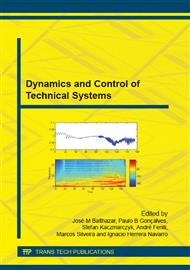p.69
p.81
p.93
p.100
p.108
p.117
p.128
p.137
p.149
Design of Semi-Active Roller Guides for High Speed Elevators
Abstract:
Comfort is an important topic in the elevator industry, and among the different factors which affect it, vibration in the car is one of the most important. Passengers not only perceive this phenomenon as an unpleasant effect, but also as a signal of the elevator safety level, and therefore it is of great importance to mitigate it. Although mature technologies are available for reducing vibration in low speed elevators, the increased number of high buildings and sky-scrappers, forces the development of new technologies for medium and high speed elevators. Active vibration control techniques are widespread used for damping vibration in different industrial environments, but their application to the elevator industry normally imply expensive solutions, with bulky and heavy actuators which highly burden its application. As alternative, the cheaper and lighter semi-active vibration systems based on passive elements capable of modifying their properties in response to external commands represent an appealing option. In this paper, we describe a design method for a semi-active roller guide based on a commercial magneto-rheological damper. Different control strategies based on low cost acceleration sensors are also analyzed.
Info:
Periodical:
Pages:
108-116
Citation:
Online since:
December 2014
Price:
Сopyright:
© 2015 Trans Tech Publications Ltd. All Rights Reserved
Share:
Citation:


